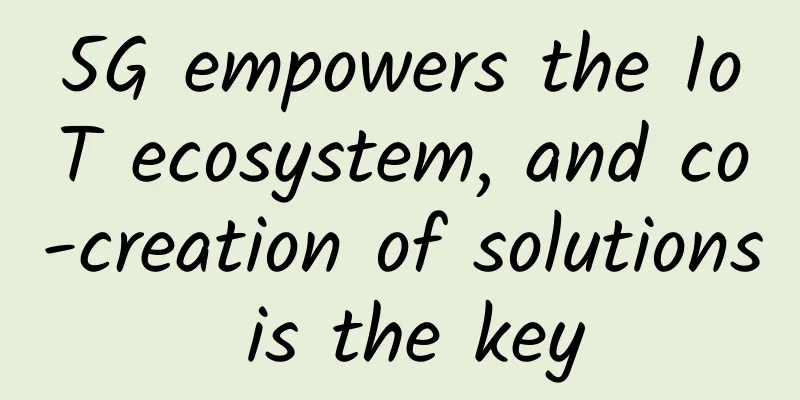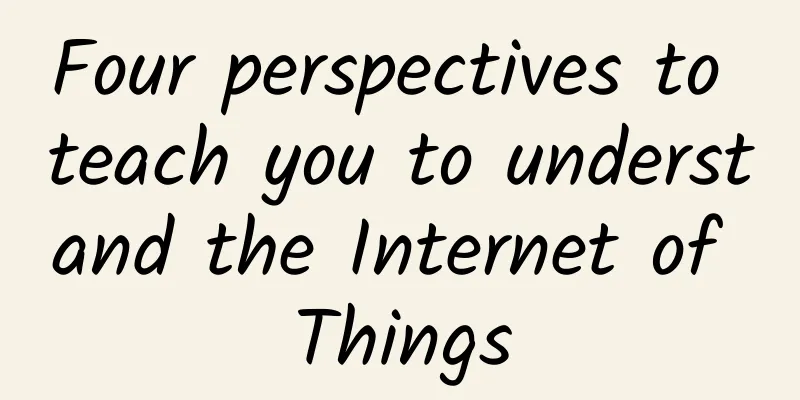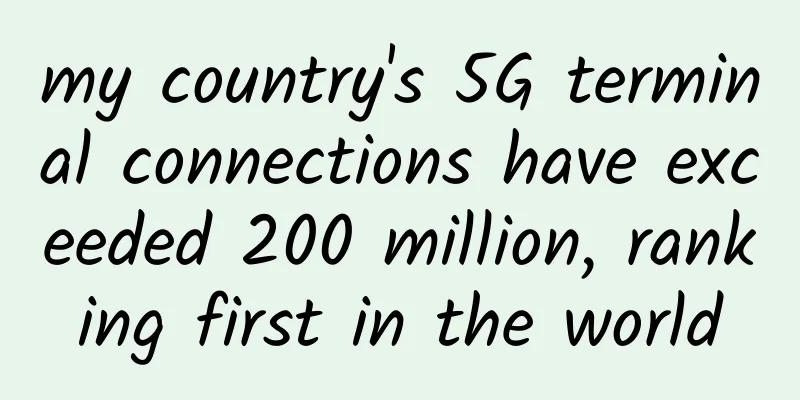After 5G, there will be no more "operators", what do you think?

|
As the name implies, the core capability of operators is operation. Differentiated operation capability is undoubtedly the moat of operators. Especially in the wireless era, operating wireless networks is a job that requires large capital and has high technical barriers. The dual barriers of capital and technology have helped operators earn high profits and created a giant industry. This also opened up the differentiated operational capabilities among operators, making China Mobile a leader in the market. But after 4G, the demographic dividend has disappeared, the scale of growth of traditional telecommunications has reached its ceiling, and it has generally fallen into the dilemma of "increasing volume but not revenue"; coupled with the advancement of chip mobile phone technology and the narrowing of network coverage gaps, the differentiation of operational capabilities has been leveled, and operators are destined to fight in a red ocean. However, 5G has been a competition without differentiation since its inception. Let’s first take a look at the giant operator we are familiar with—China Mobile. China Mobile finally lowers its price and joins the price war Finally, China Mobile bowed its head and launched unlimited data packages, which are cheaper than those of its competitors and almost 50% cheaper than China Unicom's ice cream package. China Mobile's 1.77 million LTE base stations, the world's largest LTE network, have no confidence in front of China Unicom (770,000 LTE base stations) and China Telecom (1.05 million LTE base stations). Once upon a time, China Mobile, which had almost no 3G network and terminals, relied on its 2G GSM network to compete with China Unicom's 3G WCDMA network, and it had never lowered its value like this. Why did China join the price war in the 4G era of "network leadership"? Starting from 2016, you will find that more and more people are starting to use China Telecom and China Unicom numbers. If it were a few years ago, this situation would be almost unimaginable. In 2011/12, were you dissatisfied with China Mobile's prices or services? What would you do? Switch to China Unicom, which has a cheaper price and WCDMA 3G network? No, because there is often no signal. Then go to China Telecom? China Telecom has good coverage and is cheap. No, you have to change your phone. In the end, you will most likely stay with China Mobile, even though China Mobile's 2G network is slow and expensive. This is the embodiment of China Mobile's pricing power. Excellent 2G network (GSM) coverage and rich terminals have given China Mobile strong pricing power. In China, deploying a nationwide network using medium frequency (1.8GHz or 2.1GHz) requires about 750,000 to 800,000 base stations. China Unicom only had 430,000 3G base stations at the end of 2014, and the national basic coverage was only 50%. Mobile phones often had "no 3G signal". The slow speed of 3G network construction made China Unicom have advanced technology but no physical network to provide basic services for 5 years. By the time China Unicom's 3G finally completed the initial scale of coverage in 2015, China Mobile had already deployed 1 million 4G base stations, making 3G completely a thing of the past. Entering the LTE era, China Unicom's 4G base stations reached 770,000 by mid-2017, and its coverage is comparable to that of China Mobile. Almost all mobile terminals are fully compatible, and users can switch networks without changing their phones. China Mobile has worked hard to build a high-end brand image for more than 20 years, claiming a 300Mbps download speed advantage across the entire network, but it is now powerless in the face of Unicom's price war. Although the network experiences of the three operators are different, not all differences can lead to differentiation. Only the gap in network and terminal coverage is the biggest differentiation point and source of pricing power for operators. Unlimited traffic: The most frightening thing is not the decline in profits, but the elimination of differentiation This is not a unique case in China. The same story is repeated in the United States. The United States is a magical country. With a land area of 9.37 million square kilometers, it only has 45,000 to 60,000 base station site resources. In contrast, China has about 1.9 million site resources in a land area of 9.6 million square kilometers, which is 30 times the number of sites in the United States. Consumers still feel that the coverage is not good. Imagine how poor the mobile service enjoyed by the American people is. When there is no low-frequency band (below 1GHz) for basic coverage in the United States, the network is simply unusable. In the 2G/3G era, only Verizon and AT&T had spectrum resources to build a nationwide network. Verizon was based on 800MHz CDMA, and AT&T was based on 900MHz GSM. Although AT&T's 3G network had a theoretical rate of 21Mbps, far exceeding the 3.1Mbps of CDMA EVDO Rev.A, it was limited by the high frequency band and its coverage was severely limited. Poor Sprint and T-mobile had no low-frequency coverage. Similar to China Unicom, AT&T has advanced technology but lacks good network coverage. With the first-mover advantage of iPhone, it has not been able to shake Verizon. T-Mobile's series of vigorous "Uncarrier" price wars can only snatch users from Sprint, but have not posed a threat to the two giants. The difference in coverage has become the biggest differentiation point and source of pricing power for operators, which applies to both China and the United States. In the 4G era, Verizon, with its bold investment, took the lead in supporting LTE technology and completed nationwide coverage, once again establishing a coverage advantage, followed by AT&T. The two giants have maintained double-digit revenue growth for several years. Before T-Mobile had an LTE network with low-frequency coverage, T-Mobile's price war could only drain blood from Sprint. However, after 2015, when T-Mobile completed nationwide LTE coverage at 700MHz, the brands of both Verizon and AT&T were vulnerable. T-Mobile continued to attract users with its low-price unlimited data packages, and the revenues of both giants began to decline. Finally, Verizon and AT&T had to bow their heads and launch unlimited data packages in the hope of stopping the bleeding. After network homogeneity, no operator can increase its profit margin. The EBITDA% of US operators began to converge, and the scale advantages of Verizon and AT&T are disappearing. Operators are competing to launch unlimited data packages. What is scary is not the growing CAPEX and declining profits, but the fact that the operators' networks can no longer be differentiated. The disappearing moat of operators From the cases in China and the United States, we can see that consumers expect to be connected, and the most basic elements to achieve this desire are: network coverage and mobile phones. With these two tasks done well, operators can build their own brands and then generate premiums. However, brands cannot become moats. Under the temptation of price, brands are vulnerable. Brand is the weakest and most vague means of monopoly. The advantages of operators cannot be sustained. Once competitors' coverage reaches the same level, operators will enter a stage of homogeneous competition. In order to avoid price wars, leading operators will deploy the next generation of new communication technologies in advance and rebuild their own moats. At the same time, small operators also hope to rewrite the competition landscape by deploying new technologies first. South Korea's LG U+ took advantage of Korean Telecom's hesitation in 4G construction and 3G upgrades to complete 4G nationwide coverage first and seize Korean Telecom's users. The advantages established by operators in the 3G era will not continue to 4G. It used to be extremely difficult to do a good job in network coverage and terminals. To deploy a network with good coverage, you need to study wireless propagation characteristics, plan network capacity, purchase spectrum, select sites, test and select wireless devices and terminals, optimize the network, and perform routine maintenance; coordinate with chip manufacturers and terminal manufacturers, determine technology and frequency bands, purchase terminals, and build an ecosystem. Choosing a technology path used to be a very risky decision. In the 2G era, there were 5 different technologies. The choice of network technology also included the prediction of terminals and ecosystems. If you are not careful, tens of billions of dollars of investment will go down the drain. In the 3G era, Australia's Telstra and South Korea's Korea Telecom eventually dismantled their CDMA networks and rebuilt WCDMA. In the 4G era, when Sprint in the United States made up its mind to dismantle WinMax and rebuild LTE, it was already far behind other operators. The unification of communication technology, the high degree of chip integration, and the accumulation of network construction experience have greatly lowered the "operation threshold" for operators. In the 2G and 3G era, operators might have hesitated a little bit, whether to use CDMA, which is more technologically advanced, or GSM, which has more significant scale advantages. But in the 4G era, only a few operators wanted to try WiMax at the beginning. Thanks to 3GPP and ITU, in the 5G era, operators don’t have to choose, there is only one standard. The chips are highly integrated, and a baseband chip can support almost all technologies and all frequency bands at the same time. The reduction in operational difficulty and the lower threshold for consumers to switch networks also means that the moat of operators is getting narrower and the competition is completely homogenized. Sad 5G, born homogeneous Although almost all reports about 5G now are about ultra-high bandwidth and speed. High-frequency 5G can be used to enhance the image of operators. Operators are aware that they must use low- and medium-end spectrum to complete 5G nationwide coverage at the fastest speed to build competitiveness and attract consumers. In fact, Japan's NTT Docomo has publicly announced that 5G does not require new spectrum, and the existing low- and medium-frequency spectrum will be used to deploy 5G. Knowing the importance of coverage, T-Mobile in the United States can't wait to deploy 5G on the newly purchased 600MHz spectrum. Experts will argue that this is not the true 5G defined by IMT. So what? In 2008, the ITU envisioned that 4G could provide 1Gbps capacity, but it has not been realized today, 10 years later. Consumers only care about whether the 5G signal displayed on the screen is full. With the same technology and the same terminals, the competition in 5G has been a homogeneous competition from the beginning, which is unprecedented in the history of the communications industry. However, operators have to invest because 5G coverage cannot lag behind other operators. Maybe 5G does not bring much improvement in consumer experience, but consumers will not choose "previous generation" technology. Regardless of whether 5G can bring tens of billions of IOT connections, facing the homogeneous 5G network, operators can only engage in price wars, and the inevitable result is that tens of billions of connections and data torrents cannot stop the decline of operators' traditional revenue. If, as some industry forecasts suggest, 5G will require trillions of dollars in investment, 40% more than 4G, then not only will 5G be the last straw that breaks the camel’s back for operators, it will also be a tragedy for the communications industry, as in such a slow-growing market, there are no technological breakthroughs and the cost of building a network cannot be effectively reduced. After 5G, there will be no more “operators” Not all network differences can lead to differentiation, and not all operational differences can lead to differentiation. After the two traditional differentiation points of building network coverage and creating an ecosystem disappear, there is no longer any "operational" difference between operators. The era of relying solely on operations to earn excess profits is over. A strategy that relies solely on operations is too flat. Operators' strategies need to be more in-depth. Operators should have their own "smart manufacturing industry". In the future of software, operators must have their own software development. Operators need innovation, but innovation has a direction. The biggest contradiction for operators now is the future of technological homogeneity, and high investment (CAPEX) cannot bring excess returns. Operators need to innovate in reducing network costs more than ever. It has been proven many times that it is not feasible for operators to move forward strategically and enter the terminal industry. Today's terminals are completely personalized products. Moving backward towards more standardized equipment manufacturing may be a better choice for operators. Digitalization and AI in network management are all aimed at accurately understanding one's own network and improving the accuracy of investment. After completing 4G nationwide coverage on the LTE network, NTT Docomo only maintained capacity increase on 10% of base stations, and its competitiveness is no less than KDDI and Japan's SoftBank. On the other hand, China Mobile is rich and powerful, and it is estimated that it has deployed multi-carriers on 30% of its base stations. Such investment behavior is too rough. Ren Zhengfei proposed that "in the face of increasingly large and complex networks, artificial intelligence is our most important tool for building and managing networks." However, borrowing the capabilities of suppliers is still not competitive among operators, and operators must have their own more efficient artificial intelligence. "De-telecommute", Wei Leping, former director of the Science and Technology Committee of China Telecom Group, put forward this view as early as 2013: "99.999% availability, unclear source, high cost". However, the demographic dividend was still there at that time, and operators did not realize the urgency. In 2013, the industry's hardware level was not enough to support "de-telecommute". NTT Docomo reduced the wireless network investment in the 4G period by 50% compared with the 3G period by introducing its own C-RAN technology. C-RAN was once considered a technology that could not meet 99.999% stability. Digitalization and AI-based network management can reduce the risk of "de-telecommization". Operators can accurately understand user needs and find areas with different communication needs in the network, gradually "de-telecommizing" while minimizing the impact on user experience. The rapid improvement of hardware capabilities is the basis for white-box or "de-telecom". In addition to AT&T's investment in white-box switches, Verizon and NTT Docomo have begun to invest in white-box small base stations, and Facebook's OpenCellular plan has also received support from operators. With hardware homogeneity, operators can completely differentiate themselves in software. Furthermore, white-box small base stations and software-based core networks provide cost advantages for operators to expand into the IT field. LTE and even 5G technology can completely replace WIFI by simplifying and sinking to enterprise users and even ordinary users. Wireless technology based on 3GPP technology is better than IEEE system WIFI in terms of quality and security, but the cost is too high to enter the huge market for home use. The unprecedented unification of 5G standards and the battle for unlimited data packages have heralded the beginning of network non-differentiation. Operators and equipment manufacturers, who are at the turning point of the industry, are still in the process of adapting and are unwilling to admit this reality. However, the future belongs to those who first accept reality and actively change it. |
<<: Cisco launches AI-based predictive services
>>: 10 best practices to make your first IoT project a success
Recommend
Sharktech cloud server 35% off annual payment starting at $33, 2G memory/40G hard drive/4TB traffic/multiple computer rooms available
Sharktech, also known as SK or Shark Data Center,...
What you need to know about Wi-Fi 7
As Wi-Fi 7 continues to make waves in the technol...
Operator T-Mobile announced: Delayed closure of Sprint 3G CDMA network for three months
On October 25, operator T-Mobile announced that i...
Ministry of Industry and Information Technology: 160 million terminals have been connected to 5G networks
On October 22, at a press conference held by the ...
The truth about 5G speed, is your 5G package worth it?
[[326825]] We'll cover the different 5G speed...
Can you really explain TCP's three-way handshake and four-way handshake?
What is TCP Before understanding the three-way ha...
iWebFusion high-end servers start from $49/month, 4-40 core CPU, 384G memory, NVMe hard drive, 1-10G bandwidth, multiple computer rooms in Los Angeles and other places
We often share the VPS hosting information provid...
Justhost Hong Kong VPS upgraded to up to 10Gbps bandwidth, 20% off unlimited traffic, starting at $3.46 per month
I received a message from Justhost.ru, hoping to ...
The third generation of SD-WAN security
If local Internet access is not provided to branc...
Shi Kai: ThoughtWorks creates a competitive advantage for you
[51CTO.com original article] On December 1-2, 201...
UUUVPS newly launched Los Angeles AS9929 line VPS with 15% discount, native IP monthly payment starts from 33 yuan
UUUVPS (Sanyou Cloud) has newly launched the AS99...
Asia Pacific to account for 60% of global 5G connections by 2026
[[422145]] According to new market research, ther...
The impact of blockchain technology on the future world and data centers
As organizations gain a deeper understanding of t...
Considerations and conclusions of Iperf network throughput/bandwidth testing
Iperf test: Use udp to set the bandwidth to 2M, 5...
The three major operators released their third quarter financial reports. The transformation has been effective but there is still a long way to go.
Recently, the three major telecom operators have ...









